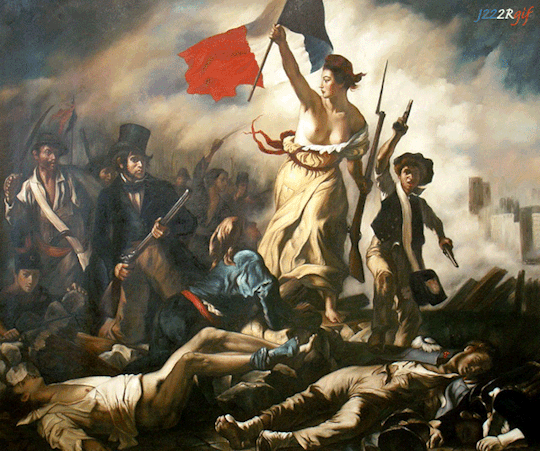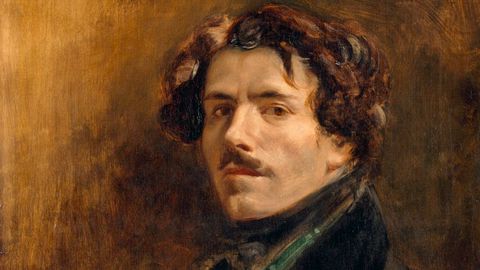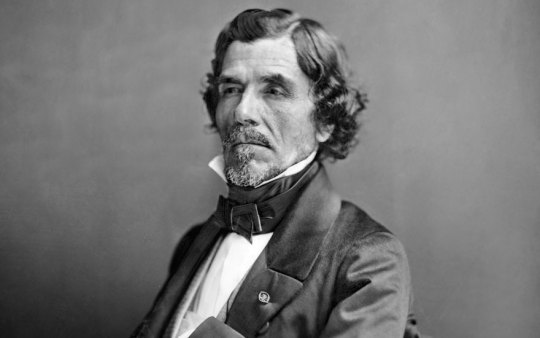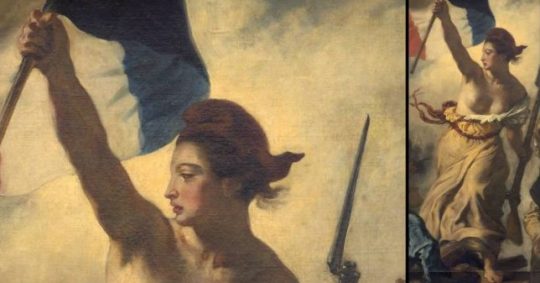#Lämmer
Explore tagged Tumblr posts
Text
Gespräch beim Fleischeinkauf
Fr. Friedel und Fr. Fröhlich, zwei ortsansässige Eingeweihte, treffen sich beim Fleischhauer, einem der letzten in der Gegend, der natürlich alles selbst schlachtet und nur Fleisch von Tieren aus regionaler Aufzucht verwendet.„Grüß Gott, Herr Fleischer!“, begrüßen die beiden Frauen den Herrn hinter dem Verkaufspult.„Gott zum Gruße, meine Damen“, erwidert der Fleischer.„Habens schon gehört?“,…

View On WordPress
0 notes
Video
Gang of eight by Pascal Volk
#Europe#Germany#Berlin#Berlin Lichtenberg#Lichtenberg#Landschaftspark Herzberge#Tier#Animal#Animalia#Rauhwolliges Pommersches Landschaf#Hausschaf#Pomeranian Coarsewool#sheep#Ovis orientalis aries#Lämmer#Lambs#corderos#Black#schwarz#negro#Spring#Frühling#Primavera#Canon EOS 5D Mark IV#5DMkIV#SIGMA 150-600mm F5-6.3 DG OS HSM | Contemporary#600mm#Manfrotto#MMXProA4#DxO PhotoLab
0 notes
Photo

#lämmer #schafe #wagrainkleinarl #grafenberg #landwirtschaft #bergbauern (hier: Wagrain, Salzburg, Austria) https://www.instagram.com/p/Cp_9Zw2tt4H/?igshid=NGJjMDIxMWI=
0 notes
Photo
Kleiner Vorgeschmack auf meinen Geburtstag versehen mit der Bemerkung, dass es so etwas nur in abgeschwächter und gescheiterter Form in Deutschland gab. Ein kollektives Phänomen, dass bis heute nachwirkt und auch heute noch die Politik bestimmt.

Le jour où la France coupa la tête de son roi, elle commit un suicide.
- Ernest Renan (1823-1892)
The painting has served as inspiration for much, from banknotes to a cover of a Coldplay album but is most commonly associated as the definitive painting to depict the storming of the Bastille on 14 July 1789 to light the fuse for the start of the French Revolution of 1789. Liberty Leading the People was painted in 1830 by Eugene Delacroix right after the revolutionary effervescence that had swept across Paris that same year.
Characterised by its allegorical and political significance, this large oil on canvas has become a universal symbol of liberty and democracy. Often used in popular culture to symbolise people’s emancipation from oppressive domination, it is one of the most famous paintings in Art History.
However this is wrong.
Liberty Leading the People is a painting usually associated with the July Revolution of 1830 in France. It is a large canvas showing a busty woman in the centre raising a flag and holding a bayonet. She is barefoot, and walks over the bodies of the defeated, guiding a crowd around her.

Eugène Delacroix was a master of colour and it is in Liberty Leading the People that he clearly expressed this. Carefully, Delacroix built a pulsating and dynamic scenario about an extremely current theme in his times. As he participated little in the fighting, he wrote: “If I can not fight for my country, I paint for it.”
The painting is about freedom and revolution. First, because that is exactly what it portrays. In July 1830, France rose up against King Charles X, who was extremely unpopular for, among other things, being very conservative in political terms and trying to restore an old regime that French people no longer wanted. In the artistic sense, the painting also represented a revolution – and more than that: freedom. In the time of Delacroix, painters generally obeyed the rules of the Academy of Fine Arts which stressed the mastery of drawing, disegno. Delacroix, however, put more emphasis on the use of colour in an unobstructed way.
A year after its production, the painting was bought by the French Government and but was not on display for a long time. Currently, the artwork is part of the Louvre collection.

If Jacques-Louis David is the most perfect example of French Neoclassicism, and his most accomplished pupil Jean-Auguste-Dominique Ingres, represents a transitional figure between Neoclassicism and Romanticism, then Eugène Delacroix stands (with, perhaps, Theodore Gericault) as the most representative painter of French romanticism.
French artists in early nineteenth century could be broadly placed into one of two different camps. The Neoclassically trained Ingres led the first group, a collection of artists called the Poussinists (named after the French baroque painter Nicolas Poussin). These artists relied on drawing and line for their compositions. The second group, the Rubenists (named in honour of the Flemish master Peter Paul Rubens), instead elevated color over line. By the time Delacroix was in his mid-20s - that is, by 1823 - he was one of the leaders of the ascending French romantic movement.

From an early age, Delacroix had received an exceptional education. He attended the Lycée Imperial in Paris, an institution noted for instruction in the Classics. While a student there, Delacroix was recognised for excellence in both drawing and Classics. In 1815 - at the age of only 17 - he began his formal art education in the studio of Pierre Guérin, a former winner of the prestigious Prix de Rome (Rome Prize) whose Parisian studio was considered a particular hotbed for romantic aesthetics. In fact, Theodore Gericault, who would soon become a romantic superstar with his Raft of the Medusa (1818-19), was still in Guérin’s studio when Delacroix arrived in 1815. The young artist’s innate skill and his teacher’s able instruction were an excellent match and prepared Delacroix for his formal admission to the Ecole des Beaux-Arts (the School of Fine Arts) in 1816.
To become leading figure of the French romantic school, Delacroix wished to emancipate himself from academic art’s classical ideal and canons. The subject of the painting was a contemporary one, whereas canvases of this size were generally reserved for historical paintings, at least according to the rules of the hierarchy of genres of the Academy. Delacroix stated that he has “undertaken a modern subject, a barricade, and although I may not have fought for my country, at least I shall have painted for her. It has restored my good spirits.” The painter also uses reds and blues, which result in stark contrasts, instead of the more muted colours that were used at that time.
Delacroix wasn’t much of a revolutionary himself and did not take part in the Paris fighting, but rather defined himself as a “simple stroller.” As he wrote in a letter to his brother; “A simple stroller like myself ran the same risk of stopping a bullet as the impromptu heroes who advanced on the enemy with pieces of iron fixed to broom handles.” However, he advocated for liberalism and was struck by a feeling of patriotism and pride as he observed his fellow citizens fighting.

The revolution depicted in this painting is not to be confused with the 1789 French Revolution. Delacroix was inspired by the events of the July Revolution (known as Les Trois Glorieuses” (Three Glorious Days), a political upheaval that took place between 27th and 29th July 1830. These violent demonstrations took place as the ruling French King Charles X tried to restrain the freedom of the people by executing a constitutional takeover. Parisians violently protested against the abuses of their individual rights. Rioters took hold of the city and violent fighting ensued, resulting in a high death toll. Charles X eventually abdicated and a constitutional monarchy, the July Monarchy, was established with Louis-Philippe I being made King of the French.
This uprising of 1830 was the historical prelude to the June Rebellion of 1832, an event featured in Victor Hugo’s famous novel, Les Misérables (1862), and the musical (1980) and films that followed. Anyone familiar with Claude-Michel Schönberg and Alain Boublil’s musical can look at Delacroix’s Liberty Leading the People and hear the lyrics of the song that serves as a call to revolution:
Do you hear the people sing? Singing a song of angry men? It is the music of a people. Who will not be slaves again.

Marianne, the Allegorical Muse
At the centre of the painting, the allegorical depiction of Liberty draws the eye immediately. Represented as Marianne, a symbol of the Republic, the woman coiffed with a Phrygian cap (a nod to the sans-culottes of the French revolution) is leading a group of revolutionaries. Her draped yellow dress reveals her breast and recalls the Greek goddesses of Antiquity. Her profile, a straight nose, plump lips, and a delicate chin are reminiscent of Antique Greek and Roman statues. She is a tribute to Ancient Greece, the cradle of democracy, as well as to the Roman republican tradition. However, Delacroix mixes in modern symbols as she holds the tricolour flag in one hand, and a bayonet in the other. This way, Liberty embodies both the modern struggle and Antiquity’s ideology of freedom.
The painting’s pyramidal structure heightens the fighting’s momentum. The ground is strewn with bodies and, out of the misery and pain, Liberty stands tall on the remains of a barricade, emerging strong and victorious. This rigorous composition contains and balances the painter’s impetuous brushstrokes and creates a striking lighting effect. It is a scene of chaos and energy, filled with smoke and movement, and yet Delacroix’s pyramid successfully creates a sense of order. The painting recalls Gericault’s Raft of the Medusa, that represents violence without idealising it.
The title makes it obvious, the woman represented here is the ideal of freedom. But even as an allegorical figure, the woman is more than that: her name is Marianne, which is probably the result of joining together two very common names in France at the time, Marie and Anne.
Curiously, 18 years after the July Revolution, Marie Anne Hubertine, a French activist who fought for the insertion of women in politics, was born. This is because, although the representation of freedom was feminine, women still couldn’t vote or stand for public office - although the female figure was always chosen to represent most of the allegories.
Keep reading
122 notes
·
View notes
Text
Heya, let me introduce you to my new Discord Server for Hannibal stans!
There's basically no one here yet, thus let's change that and have some fun in Baltimore together.
Hopefully see you around soon.
(Feel free to reblog!)
#hannibal edit#hannibal 2001#hannibal lecter#hannigram#hannibal#silence of the lambs#schweigen der lämmer#sotl#clannibal#horror classics#anthony hopkins#movies#hannibal x clarice#hannibal nbc
21 notes
·
View notes
Text
Me? Obsessed with SOTL?
Yeah. I can't remember any other movie that I've ever had to think about in a free second yet I can't put into words why. It just won't let go of me.
youtube
Therefor I couldn't resist dedicating an edit to the most reckless, chaotic and controversial "couple" (If you wanna call 'em like that) ever.
#the silence of the lambs#sotl#hannibal lecter#clarice starling#schweigen der lämmer#hannibal#hannibal x clarice#clannibal#anthony hopkins#jodie foster#Youtube#better worship anthony hopkins as much as I do if you wanna be friends#silence of the lambs
22 notes
·
View notes
Text
Schweigen der Lämmer (1991) Die FBI-Agentin Starling ist auf der Jagd nach dem Serienmörder Buffalo Bill. Um ihn zu erfassen, kontaktiert sie einen ebenso berühmt-berüchtigten Mörder, der dafür bekannt ist, seine Opfer erbarmungslos zu verstümmeln - Hannibal Lecter. Dieser ist in Vergangenheit der Psychiater des Gesuchten gewesen.

(10/10)
#Schweigen der Lämmer#Spielfilm#1991#Thriller#Krimi#The Silence Of The Lambs#Jonathan Demme#Jodie Foster#Anthony Hopkins#Kasi Lemmons#Scott Glenn#Anthony Heald#Frankie Faison#Thomas Harris
2 notes
·
View notes
Text
Just followed someone for their cute profile pic
#ich bin nicht immun gegen kleine lämmer#ach ja die zeit auf dem hof entfaltet ihre volle wirkung#saru grrrs
0 notes
Text
"Gedächtnis ist das, was ich statt einer Aussicht habe."
Das Schweigen der Lämmer
#Schweigen der lämmer#silence of the lambs#anthony hopkins#jodie foster#film#horror#Erinnerung#zitat
0 notes
Text
0 notes
Text

Martin Grandits (Austrian,b.1982)
Wir fahren mit der Geisterbahn aka. (X .H. und ihre Lämmer Lamm am Weg zur Galerie), 2024
Oil on aluminium
298 notes
·
View notes
Text
Lieblings
tw: mentions of abuse? I really don't know what to label for tw this is pretty tame for 40k standards
"Why do you call them Lieblings, König?" The demonologist said as Konig looked at the pict of the belt of skulls and he looked at them lovingly and fondly.
It was a shame really... a man who was not a man being that attractive. His slightly crooked nose from being broken and long aburn hair with small strands of grey and those icy blue eyes... a blink later and they are molten brass again. The stubble on his chin as he runs his callosed fingers against the pict looking at each individual skull with such loving adoration. "Because that is what they are... klein Schatz... little treasures... lamm." He whispers reverently looking at the center skull.
"She was my first... I was trapped in a demon weapon... it all blurs together but she was such a sad little thing. I could taste her blood in the air as bindings tore at her little limbs. I could taste her tears... I have a soft spot for women. But I am certain you already know that but... I tend to gravitate towards abused women. " Again he pets the pict of the skull belt. "All of them... abused and bleating... bleating and crying to be saved. And you know what I did?" He whispers as he leans in his eyes intense in their gaze at the demonologist.
"What did you do König?"
"I saved them." He says in almost an pleasured whisper. "I gave them the means to save themselves."
"How. Weapons that hold greater demons require a great will to control. That either implies they had great wills." She pauses as he shakes his head.
"They were Lämmer their wills were fragile. I allowed them to wield me. I remember their little hands gripping the handle of the weapon I was trapped in. Their shuttering sobs and whimpered pleas to be saved." He let out a moan as his skin shifted and moved as if he was trying to spread his wings. Hands jumped to blessed guns but his skin stopped moving as he let out a hard exhale calming himself down. "They all fed me their blood and the blood of their abusers. I saved them at the end of the day."
"Yet they are all on your belt." She says with a pop of her lips at the 't'.
"Natürlich." He says with a shrug, "They make a deal with me at the end of the day. I keep their souls away from their abusers."
"What?"
"Lord Khorne has a soft spot for females. They rest in the fields and meadows. Where they wait to be reborn a new... to give birth to strong warriors or to become strong warriors... as every month your sex bleeds..."
Her face screwed into something displeased, "And he cares not from where the blood flows..."
König nods, "As long as it flows." His eyes flick to her crotch before he licks his maw as his eyes glow brightly before they look into her eyes and he just grins. "I can personally collect that blood for him liebling." König purrs loudly.
"We're done here." She says standing up and walks away from the blood hungry demon.
#warhammer 40k#warhammer 40k au#bloodthirster#bloodthirster!konig#konig#konig cod#konig call of duty#demon!konig#bloodthirster!König#demon!König#König#könig cod#könig call of duty
17 notes
·
View notes
Text
Was die meisten Fans nicht über Mads Mikkelsen wissen

www.looper.com/297825/what-most-fans-dont-know-about-mads-mikkelsen/
Mikkelsen begann mit dem Turnen und sagt, dass der Sport sein Leben gerettet hat. Er hatte einmal einen Motorradunfall, der schlimm hätte enden können, aber wie er dem Scan Magazine erklärte : „Irgendwie habe ich es geschafft, in der Luft einen Salto zu machen und auf meinen Füßen zu landen. Ich bin mir nicht sicher, wie ich das gemacht habe, aber es könnte daran liegen, dass ich einen Turnerhintergrund habe.“
Während Mads Mikkelsen oft sehr intensive und glamouröse Rollen wie Igor Stravinski in Coco Chanel & Igor Stravinski und Tristan in König Artus spielt , verbringt er seine Freizeit im wahren Leben lieber mit seiner Frau Hanne Jacobsen, seinen Kindern Viola und Carl und den Einheimischen. Mikkelsen sagte gegenüber Scan Magazine : „Ich genieße es, einfach zu Hause auf meiner Bank zu sitzen und ins Nichts zu blicken. Und ich genieße es, die Nachbarn, Freunde und die Familie zu sehen. Ich reise in meinem Berufsleben viel zu viel, deshalb bin ich normalerweise einfach glücklich, wenn ich zu Hause in Kopenhagen bleibe.“
Aufgrund seines sportlichen Hintergrunds im Turnen und Ballett ist Mikkelsen heute ein begeisterter Sportler und träumt oft davon, sich für sportliches Training eine Auszeit von der Arbeit zu nehmen. Im selben Interview mit dem Scan Magazine sagte er: „Ich könnte problemlos drei Jahre frei nehmen und nur Sport treiben. Ich würde mir alles ansehen, was ich sehen könnte, und an allem teilnehmen, woran ich teilnehmen könnte.“ Und was seine Lieblingssportarten angeht, sagte er weiter, dass er gerne Fahrrad fährt und sowohl Tennis als auch Fußball spielt (wir gehen davon aus, dass er nicht American Football meint).
Mads Mikkelsens trockener Sinn für Humor kam in einem Interview mit The Hindustan Times über seine Arbeit in drei Staffeln von Bryan Fullers Hannibal erneut zum Vorschein . Auf die Frage, wie er sich auf diese Kultrolle vorbereitet habe, antwortete er: „Ich habe mir alles angeschaut, was Anthony Hopkins gemacht hat, und ich habe es kopiert.“ Er fuhr fort: „Nein, natürlich ist es kein Geheimnis, dass er eine Kultfigur geschaffen hat, die wir nicht kopieren können, weil er sie perfekt gemacht hat.“ Mikkelsen ging dann tiefer auf seine Charakterentwicklung ein und sagte: „Meine Figur muss Freundschaften mit Leuten schließen, und er ist da draußen; er praktiziert als Psychiater. Er muss also bis zu einem gewissen Grad normal sein, wenn die Leute ihn ansehen, und ein wenig abnormal, wenn sie das nicht tun.“
Wie wir im Fernsehen gesehen haben, ist Mikkelsens Lecter ein ganz anderes Monster als Hopkins, dessen stille Geisteskrankheit vom ersten Augenblick an, als wir ihn in Das Schweigen der Lämmer trafen, sichtbar wurde . Mikkelsens Darstellung hingegen ist gewissenhaft und kontrolliert und verlässt sich genauso auf die Anmut des Tänzers wie auf einen unterschwelligen Wahnsinn, der nur gelegentlich durchscheint. Mikkelsen entschied sich außerdem, Lecter als Spiegelbild seines Gegenstücks Will Graham (Hugh Dancy) zu spielen, des Mannes, der in den Büchern schließlich Lecters Geheimnis, ein kannibalischer Serienmörder zu sein, aufdeckt und ihn fängt. Mikkelsens Interpretation von Lecter war frisch und aufregend, vor allem, weil sie so anders war als die vorherigen Versionen und besonders als Sir Anthony Hopkins‘ Lecter. Das alles war Mikkelsens Absicht.
Fans von Mads Mikkelsen und Hannibal können sich unmöglich vorstellen, dass ein anderer Schauspieler die Rolle des Hannibal „Kannibal“ Lecter mit so viel einzigartigem Stil und Elan übernehmen könnte wie Mikkelsen. Aber für NBC war dieser unbekannte dänische Schauspieler ein zu großes Risiko und sie wollten einen bekannteren und bekannteren Namen für die Rolle, um die Zuschauerzahlen zu steigern. Zwei der Namen, die ernsthaft in Betracht gezogen wurden, waren John Cusack und Hugh Grant, aber Hannibal-Schöpfer Bryan Fuller war von Anfang an fest entschlossen, Mikkelsen zu spielen.
Mads Mikkelsen hat nicht nur in Filmen wie König Artus , Die drei Musketiere und Zeit des Aufstands einen Ritter gespielt , er wurde auch im echten Leben zum Ritter geschlagen. In Dänemark wurde Mikkelsen für seine herausragende Arbeit in Film und Fernsehen der „Rider“ oder Ritterschlag des Dannebrog-Ordens verliehen , der seit dem 17. Jahrhundert auch als Orden der „Weißen Ritter“ bekannt ist.
Um nicht von Mikkelsens Heimatland übertroffen zu werden, verlieh Frankreich ihm den begehrten Titel eines Ritters des „Ordre des Arts et des Lettres“, was übersetzt so viel wie Orden der Künste und der Literatur bedeutet. Diese Auszeichnung wird jenen verliehen, deren Beitrag zu Kunst und Kultur außergewöhnlich ist. Angesichts der Tatsache, dass so viele von Mikkelsens Filmen bei den Filmfestspielen von Cannes gezeigt wurden, ist es keine Überraschung, dass Frankreich Mikkelsen auf diese Weise ehrt, obwohl er kein Franzose ist. Mikkelsen wurde zusammen mit seinem langjährigen Mitarbeiter, dem Regisseur Thomas Vinterberg, zum französischen Ritter geschlagen.
Viele von Mads Mikkelsens Rollen haben eine religiöse Komponente, von Valhalla bis Hannibal . Seine Darstellungen haben oft einen tiefen spirituellen Kern, selbst wenn er einen Antihelden in Rogue One oder einen Bösewicht in Doctor Strange spielt , was darauf schließen lässt, dass hinter seinen fesselnden Augen so viel mehr vor sich geht. Tatsächlich spielte er 2005 in der düsteren Dramedy Adam’s Apples einen echten Priester .
Doch in einem Interview mit dem deutschen Fernsehsender Euromaxx verriet Mikkelsen, dass er sich keinem Glauben angehört. Stattdessen ist er Agnostiker. „Obwohl ich überhaupt nicht religiös bin, glaube ich daran, andere Menschen so zu behandeln, wie man selbst behandelt werden möchte“, erklärte er. „Ich denke, das war ein kluger Schachzug der alten religiösen Menschen.“ Diese entspannte, liebgewonnene Haltung könnte auch seine häusliche Persönlichkeit erklären und warum er sich aus dem Trubel des Promilebens und der Promikultur ferngehalten hat.
4 notes
·
View notes
Text
Himmlisches Tribunal
Und wie von Himmelschören erklingt ein Gesang Erst ganz leis, wie Harfengezupfe in den Wolken Dann mit einem Dröhnen, s'wird einem bang Donnergleich fegt's durch Leiber und Seelen
Ein drohender Singsang, einem Hilfeschrei gleich Selbst taube Ohren werden es vernehmen Es reicht wenn es reicht Mich durchfährt ein Beben
Lasset die Richter kommen Führt die Schuldigen rein Anwälte wird es nicht geben Eingeschenkt wird reiner Wein
So sitzen sie nun, wie Lämmer auf der Schlachtbank In Reih und Glied, der Schlimmste zuvorderst Und die Reihe zieht sich fort, um die Welt gerankt Einjeder findet sich wieder, wahrscheinlich nicht zuhinterst
Des Richters Hammer fällt so manches Mal Und ebenso oft fällt des Henkers scharfes Beil Die Aufreihung verliert an Zahl Wird kleiner mit jedem Galgenseil
Und so ist's verblieben S'ist nichts geblieben Soeben noch von ihnen getrieben Sind jetzt, alle Sünden vertrieben
#blackteastorm#poesie#poetry#deutsche lyrik#lyrik#gedicht#art#original poem#poem#poems on tumblr#gericht#sünden
2 notes
·
View notes
Text

Ich bekomme Panik, in der Stille meiner Gedanken, brennt mein Körper innerlich wie Feuer, es sieht keiner, aber ich fühle es jede Minute...
"Mach das die Lämmer aufhören zu schreien"
#depressiv#depressing shit#sorry for being depressing#allein#einsam#dunkelheit#gedanken#angst#depressing life
4 notes
·
View notes
Text
Dumb thing I say sometimes that always gets way more laughs than it deserves:
'The Silence of the Lambs' translated to German is 'Das Schweigen der Lämmer'. The word 'dilemma' is the same in German but pronounced more like 'dee-lemma'. Now whenever someone says the word 'dilemma' in German, I say 'Das Schweigen die Lämmer' ('die Lämmer' sounds the same as 'dilemma' in German). It translates to 'The Silence the Lambs', without the 'of'. It's such a stupid and meaningless phrase that falls out of my mouth almost accidentally, and yet people don't expect it which means they usually laugh at it.
6 notes
·
View notes